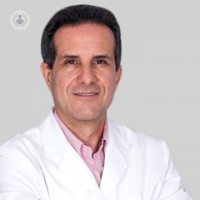Dental implants: Present and Future of Dentistry
Written by:Dental implants are today, the best and the most advanced technique for replacing teeth lost for any reason. Countless advantages possessed compared to other alternatives, among which are fixed prostheses of various types of ceramic (bridges) and removable prostheses of different materials. In this sense, it is the option that looks like a natural tooth, equaling the implant tooth root, then acoplándosele a crown, bolted or cemented to the implant.
Unlike what might be thought at first to be a surgical technique, the implant is less aggressively, and thus more conservative to replace missing teeth, as the technique is limited to the gap, without carve adjacent pieces for use as pillars (fixed bridges) or engaging in these retaining pieces stabilizing and supporting uncomfortable dentures, with consequent wear thereof.

What types of dental implants exist?
There are many types of implants adapted to the different anatomical, functional, chronological and aesthetic needs of each patient. Thus, we have implants whose design, size and surface can adapt to the different types of bone, Extra short implants for bones with reduced dimensions, implants prepared to support immediate loads and to place the prosthesis in short time, even on the same day. In fact, even for implants are complex techniques when there is severe atrophy of the jaw (zygomatic implants). Thus, one could say without equivocation that there is at least one suitable implant for each case, however particular this is.
Once the implant placed in the bone, it will be subject to initially mechanically because of its self - tapping condition (primary retention). Subsequently, the elapsed period of osseointegration, the specialist Dentistry consolidate this subject by a biological implant-bone junction, proceeding then to the placement of the prosthesis.
What is the technique of dental implants?
As already mentioned, there are techniques and protocols that reduce much these days, and may even achieve a prosthesis at the time of surgery.
In this sense, it is available techniques Guided Surgery computer that allow, with pinpoint accuracy, using radiological tools and appropriate software, make plans 3D and virtualize surgical techniques to subsequently perform much more accurate and safer surgeries; and parallel to send information to the prosthetic laboratory for using CAD-CAM techniques, can develop prostheses that are available the same day of surgery.
An invaluable aid in the field of implantology and oral surgery in general are techniques Guided Bone Regeneration and Periodontal surgery that can serve complex implant surgeries to repair bone and soft tissue, greatly improving the final aesthetic result. To perform these techniques can be used bone from the patient, treated animal bone or multiple inorganic synthetic preparations. For soft tissue surgery autografts, ie, the same patient, or synthetic are also used.
In this field, a breakthrough is the use of plasma rich in growth factors (PRGF), obtained from the patient 's own blood using a centrifugation process. This organic product helps improve the regeneration of biological tissues and accelerate healing in general.
Finally, recent research in genetic engineering crops Stem Cell dental origin, they are intended to open the door, in the near future implantation of tooth germs in edentulous areas subsequently replace missing teeth. Until we can have this technology in our clinics, dental implants are, without doubt, the best way to replace lost or missing teeth.


